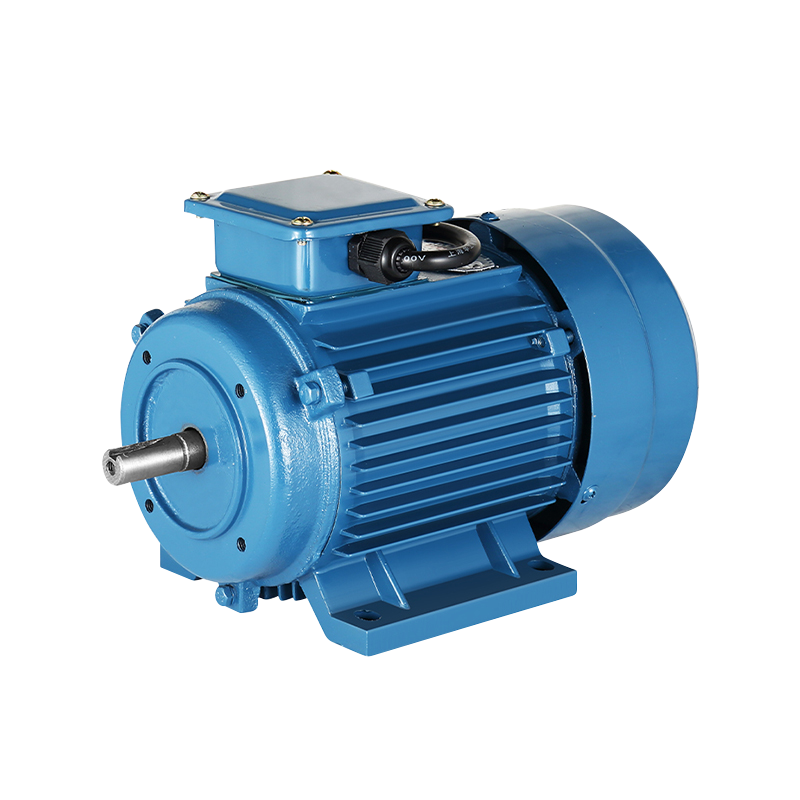Three-Phase Asynchronous Electric Motor: A Cornerstone of Modern Industrial Efficiency
In the landscape of industrial automation and mechanical engineering, the Three-Phase Asynchronous Electric Motor stands out as a vital component. This versatile and efficient technology is increasingly becoming the backbone of various industrial operations, offering a blend of performance, reliability, and energy efficiency. As industries strive for higher productivity and lower operational costs, the Three-Phase Asynchronous Electric Motor is playing a crucial role in shaping the future of manufacturing and machinery.
The Three-Phase Asynchronous Electric Motor is a type of AC (alternating current) motor that operates on a three-phase power supply. Unlike single-phase motors, which rely on a single phase of electricity, three-phase motors utilize three distinct phases. This configuration provides a continuous and balanced power supply, which enhances the motor's performance and efficiency.
The asynchronous nature of these motors means that the rotor does not synchronize with the rotating magnetic field of the stator. Instead, it lags behind, which creates torque and allows the motor to function effectively. This design makes the Three-Phase Asynchronous Electric Motor particularly well-suited for applications requiring high power and durability.
Three-Phase Asynchronous Electric Motors are utilized across a wide range of industries and applications. In the manufacturing sector, these motors drive various machinery and equipment, including conveyor systems, pumps, and compressors. Their robustness and ability to handle heavy loads make them ideal for continuous and demanding industrial operations.
In the HVAC (heating, ventilation, and air conditioning) industry, Three-Phase Asynchronous Electric Motors are essential for powering large air handling units and cooling systems. The consistent and reliable performance of these motors ensures efficient temperature regulation and air quality management in commercial and industrial buildings.
The technology also finds significant use in the agricultural sector, where it powers equipment such as irrigation pumps and processing machinery. The durability and efficiency of Three-Phase Asynchronous Electric Motors contribute to the smooth operation of agricultural processes, enhancing productivity and reducing maintenance needs.
One of the notable advantages of the Three-Phase Asynchronous Electric Motor is its energy efficiency. These motors are designed to operate with high efficiency, converting electrical energy into mechanical power with minimal losses. This efficiency results in lower energy consumption and reduced operational costs, which are critical factors for businesses aiming to maximize profitability.
The economic benefits extend beyond just energy savings. Three-Phase Asynchronous Electric Motors are known for their long lifespan and reliability, which translates into lower maintenance and replacement costs. The durability of these motors ensures that they can withstand harsh industrial conditions, reducing the frequency of repairs and replacements.
Recent advancements in Three-Phase Asynchronous Electric Motor technology have introduced several innovations that enhance their performance and versatility. Modern motors are equipped with advanced materials and design improvements that increase efficiency and reduce energy losses. Additionally, the integration of variable frequency drives (VFDs) allows for precise control of motor speed and torque, further optimizing performance and energy use.
The development of smart motor technologies is also making waves in the industry. These innovations include sensors and IoT (Internet of Things) capabilities that provide real-time monitoring and diagnostics. Such features enable proactive maintenance and performance optimization, ensuring that Three-Phase Asynchronous Electric Motors operate at peak efficiency.
The demand for Three-Phase Asynchronous Electric Motors is on the rise as industries seek more efficient and reliable solutions for their operations. The global push towards energy efficiency and sustainability is driving the adoption of these motors, particularly in sectors where high performance and low energy consumption are critical.
Looking ahead, the future of Three-Phase Asynchronous Electric Motors appears promising. Ongoing research and development efforts are focused on enhancing motor efficiency, durability, and functionality. The integration of advanced technologies such as AI (artificial intelligence) and machine learning is expected to further revolutionize motor performance and application.
-
Feedback

 English
English 中文简体
中文简体






